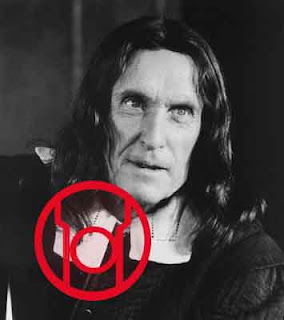If it’s all right with everyone, I’d like to take a few minutes to talk about Community’s 3rd Season Christmas episode, “Regional Holiday Music.” How great was this episode? I mean, it really was quite fantastic. The premise: When the Greendale Glee Club has a nervous breakdown over the ASCAP ordering that they stop performing copyrighted material, the Study Group is asked to step up and put on the best Christmas Pageant ever; they refuse. Yes, this episode is a Glee satire.
Community and Glee, filmed on the same lot and both premiering in the Fall of 2009, are fraternal twins of sorts. Though loved by critics, Community has never been able to compete with the popularity of Glee. If the Nielsen Ratings System was a high school, Glee would be the football team and Community would be, well, the glee club. This ratings imbalance gives the students of Greendale a free pass to take a few swings at the New Directions. Community’s first jab came in episode 1-18: “Basic Genealogy.” Jeff, dealing with a bad breakup, expresses his emotions to Pierce:
Jeff: (weeping into Pierce’s shoulder) We always used to watch the shows she wanted to watch. I hate Glee.
Pierce: I’m not crazy about Glee either.
Jeff: I hate it. I don’t understand the appeal at all.
There have been a few more shots fired, but “Regional Holiday Music” is the first time that Glee jokes ran through an entire episode.
One of the wonderful things about Community is that there’s no such thing as a one-joke episode. Though the Study Group initially refuses to perform in the Christmas Pageant, one by one they fall under the Glee Club sponsor’s spell; not only is this episode a Glee satire, it’s also a spoof on Invasion of the Body Snatchers. There’s a moment when the group is reconsidering their dismissal of the pageant:
Shirley: I guess we did have fun last time.
Troy: Did we? I can hardly remember it. It’s all a weird, happy, musical
fog.
This sums up my understanding of Glee. I don’t dislike Glee; in fact, I’m glad to finally see a musical television series last more than one season. I’ve only seen a couple of episodes, and I liked those two well enough, but for a show titled Glee, it’s a rather depressing program. Those kids are dealing with some heavy shit: sexual identity, death, teen pregnancy, and there’s even a dude that will never walk again. I didn’t realize all this while I was watching because I was paying attention to the musical numbers.
Community criticizes Glee for only showcasing covers, so, rightly, all the songs in “Regional Holiday Music” are original compositions (this could also be because NBC doesn’t want to have to pay royalty fees). Though you could form an argument for how each of the songs attacks an aspect of Glee, only the first number overtly mocks Fox’s ratings giant. The truly brilliant songs come when Troy and Abed lure Pierce into participating and later when Annie works Jeff over lyrically.
“Baby Boomer Santa” is a manic cluster of buzzwords that pays homage to pop music from the mid-forties to mid-eighties, or at least it is at first glance. This song manages to call out the “well-documented historical vanity” of the baby boomers. Great music, according to this song, begins with “The Boogie-Woogie Bugle Boy” and ends with Bob Seger. It also plays with the idea that the millennials are equally self-absorbed and thus only have the faintest grasp of 20th Century history. Examine these lines:
Santa fought at Woodstock and Vietnam,
And smoked a ton of acid, and burned his bra.
And then in 1970, he did more drugs
and his hair stayed long, and he grew a mustache.
This suggests that the only discernible difference between the 1960s and 1970s was that War and social revolution were replaced by the mustache. The song is beautiful because it both praises and buries nostalgia in a single stroke.
“Teach Me How to Understand Christmas” is a send-up of the sexy Christmas songs such as “Santa Baby.” As it mocks the sexualizing of Christmas, it really calls into question the American Sex Symbol. Alison Brie’s performance fuses Marilyn Monroe and Betty Boop in order to make a dim, giggling seductress. What begins as playful descends to childish and then deteriorates into incoherent babbling. Joel McHale’s straight-man reaction to the Annie’s self-degradation is the moment where I always laugh hardest, even though I now know it’s coming.
As to the ending: it is one of the best ever offered up by a television program: After escaping the Glee club’s spell, the gang shows up, caroling, at Abed’s apartment to keep him company and watch Christmas television specials. This is a sweet, but mundane, moment, and that is its genius. Looking to other Christmas episodes of years’ past, such as Boy Meets World, you find heartwarming moments of family togetherness, such as everyone sitting down and listening as Mr. Feeny reads Dickens’s A Christmas Carol; the problem with such an ending: now I feel guilty for watching television when I could be sitting ‘round a fire with my family and a good book. Community’s episode reinforces the practice of watching television specials. People see the tenderness involved in Jeff, Britta, Shirley, Pierce, Troy, and Annie’s arriving to comfort Abed, and, better yet, people are able to share in this moment because they too are watching television on Christmas.





